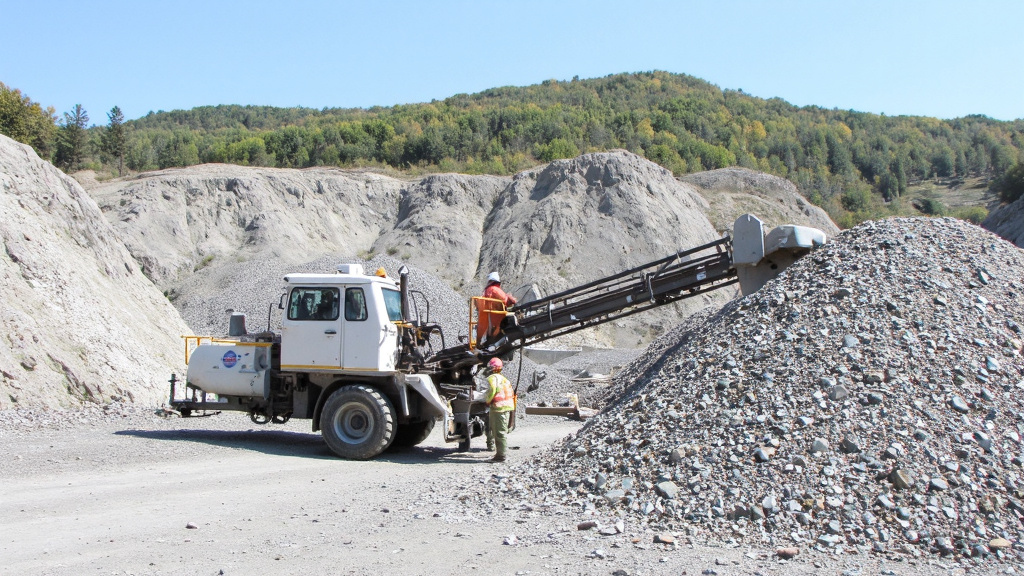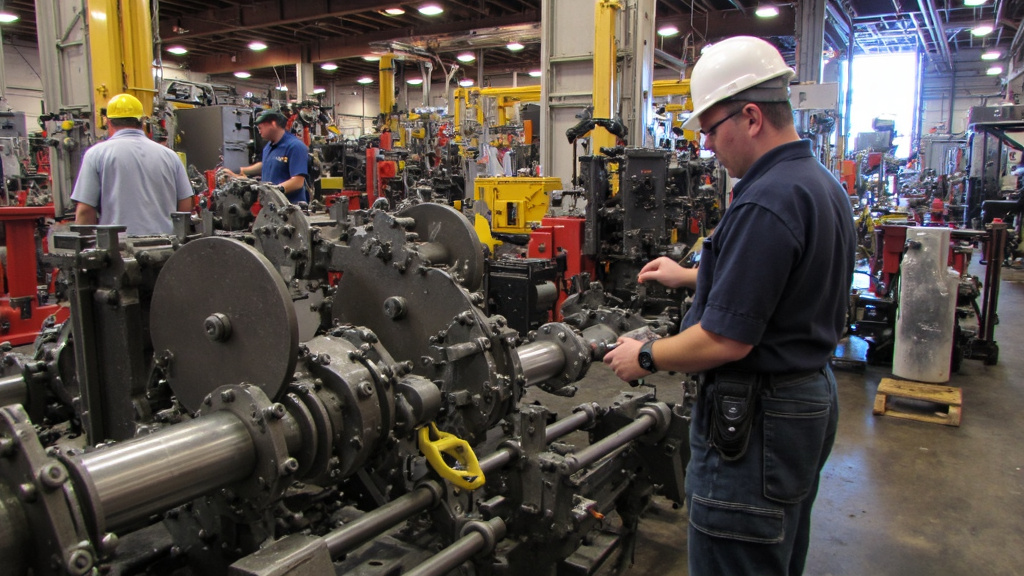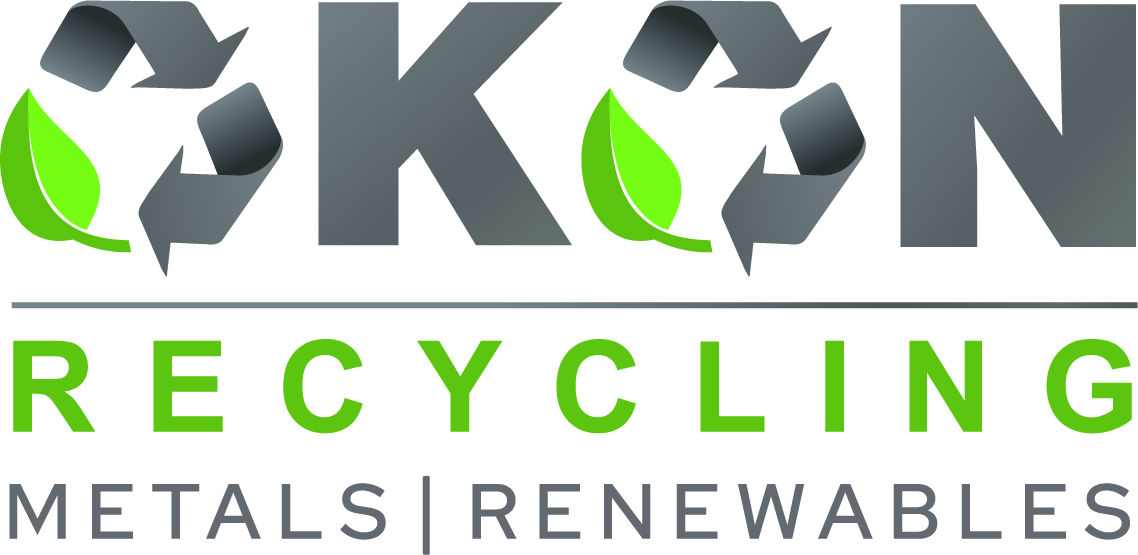5901 Botham Jean Blvd, Dallas, TX 75215
What Are Industrial Magnets for Mining and Quarrying Operations?
April 25, 2025Ferrous metal contamination poses a serious threat to mining and quarrying equipment. Industrial magnets serve as the first line of defense against these threats, designed specifically to attract and separate iron-based materials from valuable minerals and aggregates.
Heavy-duty magnets are available in various configurations to meet specific extraction needs. Mining operations utilize magnetic pulleys at conveyor discharge points, suspended separators above material flows, and rotating drum separators for processing large material volumes. Each type plays a crucial role in maintaining operational integrity.
Integrating custom magnets into mining workflows offers multiple operational benefits. They significantly enhance material handling speed and ensure greater separation accuracy. This automation reduces labor costs and virtually eliminates human error in the sorting process.
Most importantly, these magnetic systems protect expensive processing equipment from damaging tramp metal, preventing costly downtime.
What Types of Industrial Magnets are Used in Mining and Quarrying?

Mining and quarrying operations rely on specialized industrial magnets to remove unwanted ferrous materials from production lines. These magnets protect valuable equipment from damage while ensuring final products remain free from metal contamination.
Magnetic Pulleys
Magnetic pulleys are integral components of conveyor systems, replacing standard head pulleys at the discharge point of conveyor belts. As materials pass over the pulley, ferrous contaminants are attracted to the magnetic field and held until they fall away from the clean material path.
These pulleys excel at removing tramp iron—unwanted metal fragments that often appear during excavation or from equipment wear. Their self-cleaning design makes them ideal for continuous operations in quarry settings. The non-magnetic material continues along its path while ferrous metals are effectively separated.
Suspended Magnetic Separators
Suspended magnetic separators hang directly above conveyor belts, creating a magnetic zone that pulls ferrous materials upward and away from the material flow. These powerful units can extract metal from fast-moving belts with deep burden depths.
There are two main varieties: manual-cleaning models, which require operators to remove collected metal periodically by hand, and self-cleaning models, which feature continuous belts that automatically discharge collected metal to designated collection points.
The suspended design is particularly effective for capturing larger metal objects like bucket teeth, bolts, and tool fragments that could otherwise damage processing equipment. Many operations use permanent magnet versions that require no power source, functioning reliably even during power outages.
Magnetic Drum Separators
Drum separators handle high-volume applications in harsh environments. These cylindrical magnets rotate around a fixed magnetic field. As material flows over the drum surface, ferrous particles are attracted to the magnetic field while non-magnetic material falls away naturally.
The rotating action of the drum automatically carries attracted metal to a discharge point, making drum separators excellent for continuous heavy-duty operations. These separators can be manufactured with either ceramic or rare earth magnets depending on the application requirements.
Their compact footprint makes drum separators ideal for operations with space constraints while still delivering powerful separation capabilities. They efficiently process large material volumes common in quarrying operations.
Cross-Belt Separators
Cross-belt separators combine the benefits of suspended magnets with automatic cleaning features. They consist of a permanent magnetic system suspended over a conveyor belt with a small cross-belt running continuously over the magnet face.
When ferrous metals are attracted to the magnet, the cross-belt carries them away from the main product flow. This design efficiently discharges tramp metal to the side or away from the head pulley. The self-cleaning action makes these separators well-suited for applications requiring minimal maintenance.
| Magnet Type | Function | Advantages |
|---|---|---|
| Magnetic Pulleys | Replace standard head pulleys at conveyor discharge points to remove tramp iron | Self-cleaning, continuous operation, effective for tramp iron |
| Suspended Magnetic Separators | Hang above conveyor belts to extract ferrous materials | Powerful extraction, available in manual or self-cleaning models |
| Magnetic Drum Separators | Rotate around a fixed magnetic field to separate ferrous particles | Self-cleaning, compact, handle high volumes |
| Cross-Belt Separators | Combine suspended magnet benefits with automatic cleaning | Efficient tramp metal discharge, minimal maintenance |
Each type of magnetic separator serves specific needs within mining and quarrying operations. The selection depends on factors like material volume, conveyor speed, burden depth, and the size of ferrous contaminants being targeted. These magnetic systems play a crucial role in protecting crushers and other processing equipment from damage while ensuring product quality.
How Do Industrial Magnets Enhance Mining and Quarrying Efficiency?
Industrial magnets are essential tools in modern mining and quarrying operations. They improve material separation by efficiently removing ferrous metals from extracted materials, reducing manual labor and increasing processing speeds.
The precision of these magnetic systems ensures that metal contaminants are captured before they can compromise product quality. Many mining operations use specially designed magnets with maximum attraction power for high-volume production. These robust solutions can process large quantities of material without performance degradation.
Self-cleaning technology is a major advancement in industrial magnet applications. These systems automatically remove collected metal from the magnet face, eliminating bottlenecks caused by manual cleaning. This feature is particularly valuable in continuous mining operations where downtime means lost revenue.
Equipment protection is one of the most compelling economic benefits of industrial magnets. Tramp metal—stray pieces that enter the production stream—can cause extensive damage to expensive mining equipment. Even small fragments can tear conveyor belts or accelerate wear on crushers and pulverizers.
By strategically placing magnetic separators throughout the production line, mining companies prevent costly equipment failures. The initial investment in quality magnetic systems typically pays for itself many times over through reduced maintenance costs and extended equipment lifespans.
Product purity is another critical advantage of using industrial magnets. Thorough removal of metal contaminants ensures final products meet strict quality standards. This purity is essential for downstream processing and customer satisfaction.
Workplace safety improves significantly when industrial magnets are properly deployed. Automated removal of potentially hazardous metal objects reduces employee exposure to sharp edges and heavy materials. This protection is crucial in high-volume operations where manual inspection would be impractical.
Regulatory compliance is increasingly important in the mining industry. Industrial magnets help companies meet strict standards for product quality and workplace safety. As regulatory requirements evolve, magnetic separation technology provides a reliable method for maintaining compliance.
Mining companies face unique challenges that require specialized magnetic solutions. From electromagnetic pulley separators used in iron ore processing to heavy-duty suspended magnets protecting conveyor systems, different applications demand specific technologies.
Effective implementations involve strategic placement of various magnet types throughout the production process.
What are the Key Considerations When Choosing Industrial Magnets for Mining?

Selecting the right industrial magnets for mining operations is crucial for enhancing operational efficiency, equipment longevity, and overall productivity. Mining environments present unique challenges that require specialized magnetic solutions tailored to specific applications and conditions.
Application-Specific Requirements
The type of mining application significantly influences magnet selection. Iron ore cobbing requires powerful permanent magnets with high magnetic field strength to effectively separate valuable materials from waste rock. Slag processing demands magnets that operate efficiently at elevated temperatures while maintaining strong magnetic properties.
Mineral beneficiation applications need precise magnetic field control to selectively capture target materials while allowing non-magnetic minerals to pass through. Understanding your specific process requirements helps narrow down the appropriate magnet type and configuration for optimal performance.
Material Volume and Cleaning Mechanisms
The volume of ferrous metal in your mining process directly impacts the choice between self-cleaning and manual-cleaning magnet models. Operations processing large volumes of material with high ferrous content benefit from self-cleaning systems that automatically discharge collected metal without interrupting production.
Manual-cleaning models may be more suitable for processes with lower ferrous contamination levels or where collected material requires inspection before disposal. Consider your throughput rates and labor availability when determining which cleaning mechanism best suits your operation.
Customization Requirements
Off-the-shelf magnets rarely provide optimal performance in mining applications. Each mining operation has unique characteristics that demand customized magnetic solutions. The configuration of your processing equipment, space constraints, and material flow patterns all require tailored approaches.
Look for manufacturers who offer custom designs that seamlessly integrate with existing mining assemblies. Customization aspects may include specialized mounting brackets, specific dimensions, or modified magnetic field configurations to match your particular mineral composition.
Durability and Environmental Resistance
Mining environments expose equipment to extreme conditions that can quickly degrade standard industrial components. Industrial magnets used in mining must withstand abrasive materials, high impact loads, vibration, moisture, and potentially corrosive environments.
Select magnets constructed with robust housing materials, sealed components, and protective coatings appropriate for your specific environmental conditions. Durability directly affects maintenance requirements and the total cost of ownership over the magnet’s service life.
Manufacturer Expertise and Support
Perhaps equally important as the technical specifications is the expertise of the magnet manufacturer. Seek suppliers with demonstrated experience in the mining industry who understand the unique challenges of mineral processing applications.
Reputable manufacturers provide comprehensive support, including site assessments, performance guarantees, and responsive maintenance services. Their expertise ensures you receive not just a product but a complete solution tailored to your mining operation’s specific needs.
Conclusion: Recycle Your Industrial Magnets Responsibly with Okon Recycling
Industrial magnets are essential for keeping mining and quarrying operations efficient, but what happens when those magnets reach the end of their service life? Instead of discarding worn or obsolete magnets, recycling offers a sustainable alternative that supports both environmental goals and resource recovery.
Okon Recycling specializes in reclaiming and repurposing industrial magnets from mining and quarrying sites. By recycling your used magnetic systems, you help reduce waste, recover valuable materials like rare earth elements or ferrite compounds, and contribute to a more circular economy within the resource extraction industry.
If your site has decommissioned magnets ready for a second life, contact Okon Recycling at 214-717-4083. Let’s work together to recover value from what others might throw away.
